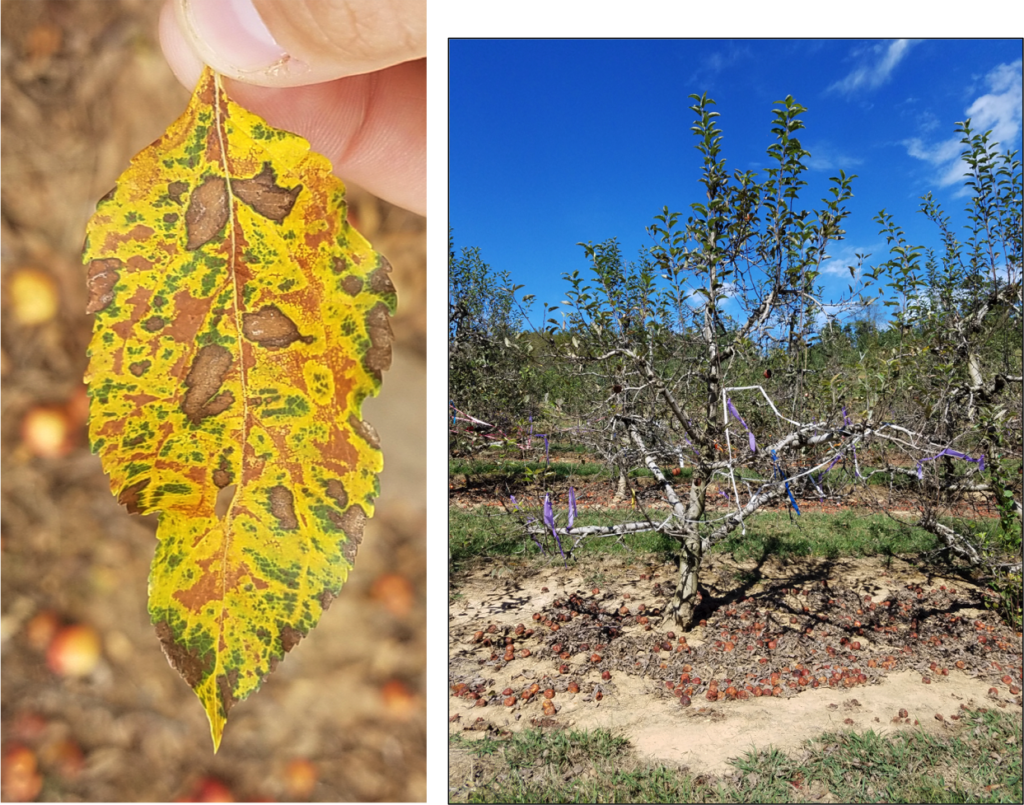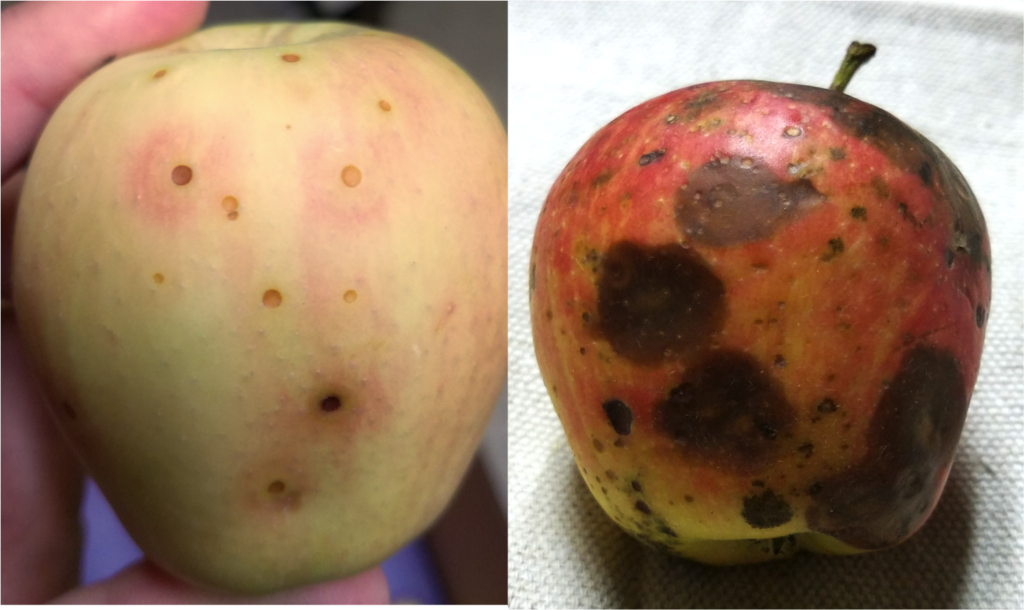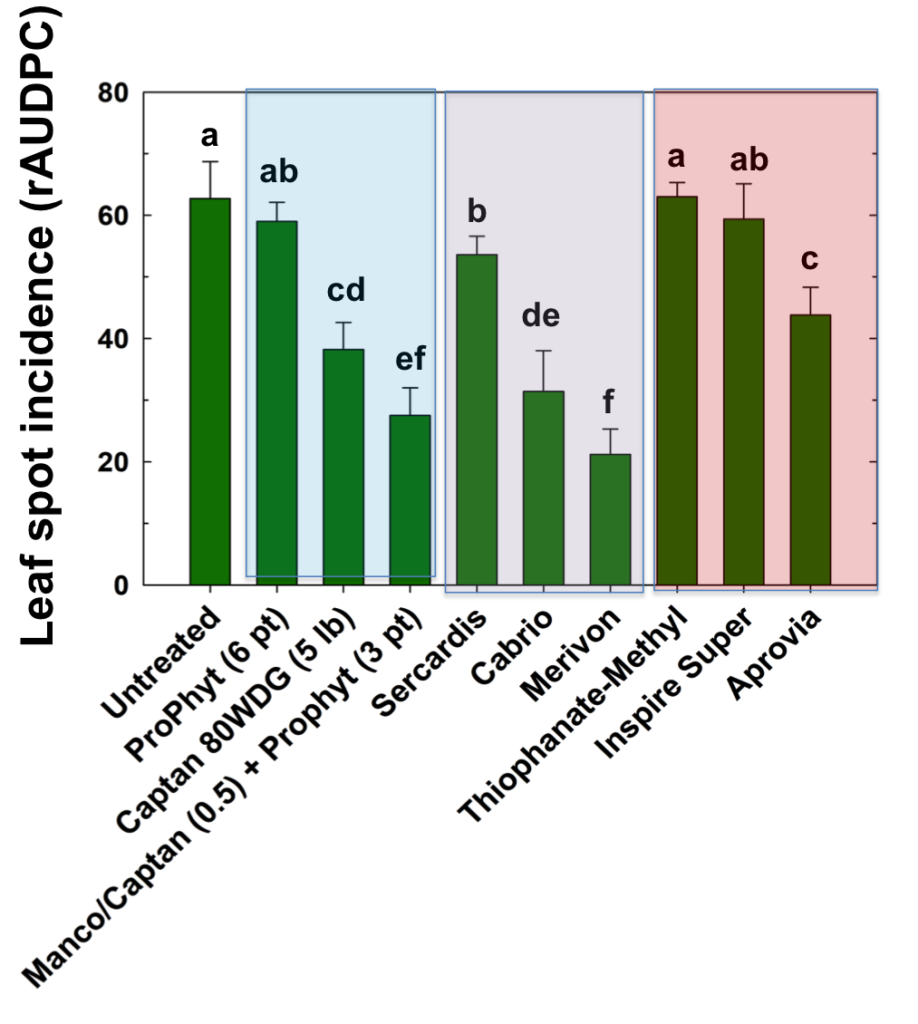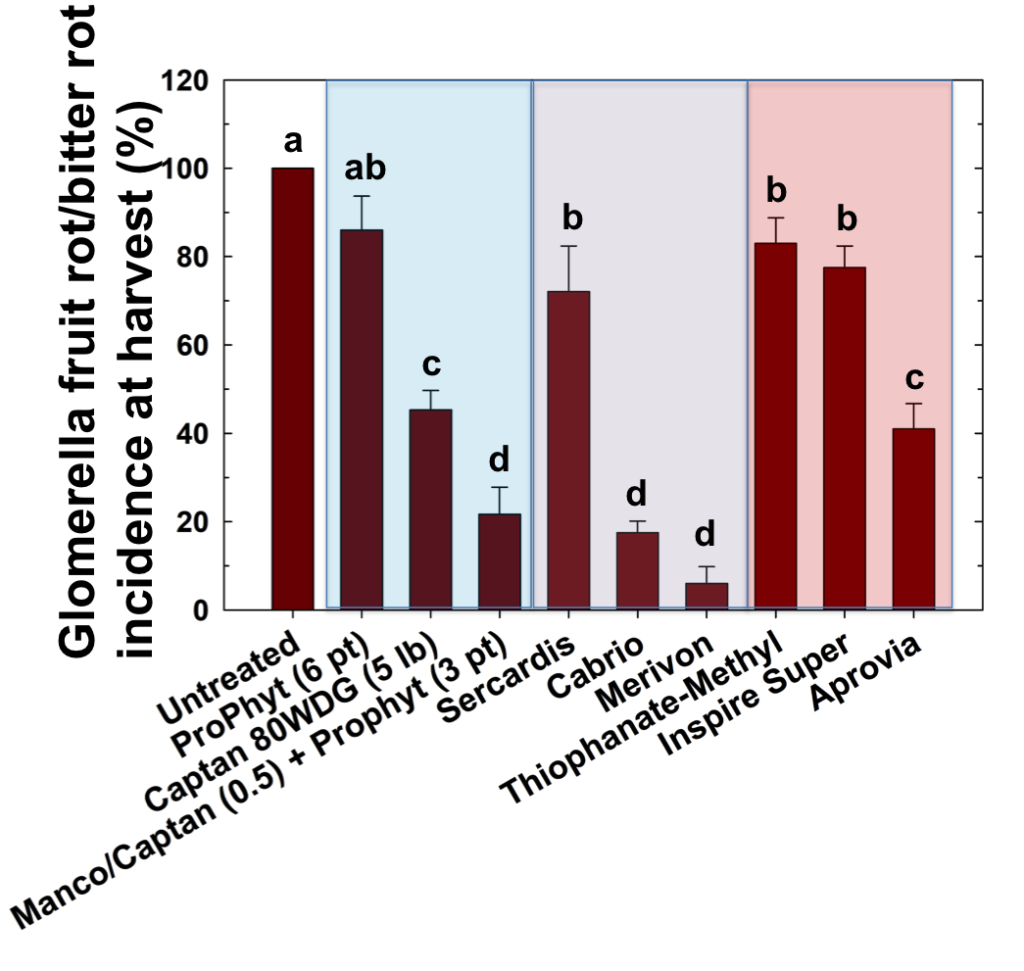Preparing for Glomerella Leaf Spot and Fruit Rot in 2018
go.ncsu.edu/readext?523205
en Español / em Português
El inglés es el idioma de control de esta página. En la medida en que haya algún conflicto entre la traducción al inglés y la traducción, el inglés prevalece.
Al hacer clic en el enlace de traducción se activa un servicio de traducción gratuito para convertir la página al español. Al igual que con cualquier traducción por Internet, la conversión no es sensible al contexto y puede que no traduzca el texto en su significado original. NC State Extension no garantiza la exactitud del texto traducido. Por favor, tenga en cuenta que algunas aplicaciones y/o servicios pueden no funcionar como se espera cuando se traducen.
Português
Inglês é o idioma de controle desta página. Na medida que haja algum conflito entre o texto original em Inglês e a tradução, o Inglês prevalece.
Ao clicar no link de tradução, um serviço gratuito de tradução será ativado para converter a página para o Português. Como em qualquer tradução pela internet, a conversão não é sensivel ao contexto e pode não ocorrer a tradução para o significado orginal. O serviço de Extensão da Carolina do Norte (NC State Extension) não garante a exatidão do texto traduzido. Por favor, observe que algumas funções ou serviços podem não funcionar como esperado após a tradução.
English
English is the controlling language of this page. To the extent there is any conflict between the English text and the translation, English controls.
Clicking on the translation link activates a free translation service to convert the page to Spanish. As with any Internet translation, the conversion is not context-sensitive and may not translate the text to its original meaning. NC State Extension does not guarantee the accuracy of the translated text. Please note that some applications and/or services may not function as expected when translated.
Collapse ▲As several cultivars enter petal fall in North Carolina, it is now a good time to be prepared for managing Glomerella Leaf Spot and Bitter Rot. Glomerella leaf spot (GLS) and fruit rot (GFR) a devastating fungal disease of apple that results in premature defoliation and diminished fruit quality or unmarketable fruit. While GLS must be managed annually on susceptible cultivars in the Southeast, other apple growing regions in the eastern US have reported occasional outbreaks during hot and humid growing seasons. For the remainder of this post, I will attempt to summarize results of our GLS/GFR research over the past couple of years, answer questions I commonly get from stakeholders, and provide some final recommendations for managing GLS in 2018.
What Pathogen is causing Glomerella Leaf Spot and Fruit Rot?
In North Carolina Glomerella leaf spot and fruit rot have been predominantly caused by Colletotrichum fructicola, a member of the Colletotrichum gloeosporiodes species complex.
What are the Signs and Symptoms of Glomerella Leaf Spot and Fruit Rot?
Early-Mid Season Leaf Spot Stage: Tiny purple flecks or specks (yellow arrow) on front of leaf which rapidly expand into irregularly shaped, often concentric lesions.

Early symptoms of Glomerella Leaf Spot on ‘Gala’. Yellow arrow: Purple leaf specks/flecks. White arrow: Irregular concentric lesions.
Late Season Leaf Spot Stage: Leaf chlorosis (yellowing) and premature defoliation, often by mid-Jul when fungicide intervention is not used.

Symptoms of Glomerella Leaf Spot later in the season. Left Photo: Leaf chlorosis due to GLS. Right Photo: Defoliation of ‘Gala’ tree in mid-July.
Glomerella Fruit Rot (bitter rot) Symptoms: Initially appear as small sunken lesions on either immature or mature fruit. Lesions expand and develop into a rot either prior to or post harvest. Unlike typical more typical bitter rot symptoms, salmon-colored sporulation is rarely observed with Glomerella fruit rot.
Are All Cultivars Susceptible to Glomerella Leaf Spot and Fruit Rot?
We are currently starting investigations into this topic in our lab. For now we can only comment on what we’ve observed under field conditions and observations from countries with a history of Glomerella leaf spot. So far in NC, we’ve only seen cultivars primarily with ‘Golden Delicious’ parentage showing Glomerella leaf spot/fruit rot symptoms including ‘Gala’, ‘Pink Lady’, ‘Jonagold’ and of course, ‘Golden Delicious’. Symptoms have also been observed on ‘Granny Smith’.
Where is the Inoculum coming from?
Good question and one still under investigation! Similar to the apple scab pathogen, Venturia inaequalis, one source of primary inoculum for GLS are ascopsores from overwintering survival structures called perithecia. However, viable conidia also likely contributing to primary infection have been identified in wood crevices, cankers, and buds. Since I have been in NC, I have only observed a secondary cycle for GLS/GFR during the summer of 2017, and suspect this was likely due to the warm and humid conditions we experienced last summer compared to 2015 and 2016. Interestingly, acervuli and conidia were observed only on fruit lesions in 2017, whereas perthicial development was only observed on fallen leaves. Furthermore, mature ascopores were not observed during the summer suggesting that fruit infection may be more important for GLS/GFR epidemics. In addition to inoculum from the host, several other hosts, including fruit crops and weeds (Virginia Creeper, Horse Nettle), may fuel a disease epidemic during the summer.

Left: Perithecia of Glomerella spp. on ‘Gala’ leaf lesion. Center: Colletotrichum fructicola acervuli on ‘Gala’ fruit. Right: Orange/salmon colored conidial masses of Colletotrichum fructicola on ‘Gala’ fruit.
When should Fungicide Applications be Initiated for GLS/GFR Management?
Infection by conidia of Colletotrichum fructicola causing GLS and GFR occurs in a temperature range of 59F to 95F and requires a relative humidity near 100%. If a standard apple scab program with a protectant fungicide (i.e. mancozeb) is being applied through bloom, programs for GLS/GFR should be initiated around the petal fall growth stage.
What Fungicide Classes are the Most Efficacious Against GLS?
With support from the NCDA & CS Specialty Crop Block Grant Program, Kendall Johnson, a graduate student in my program, has been investigating this question as part of her Master’s Degree research. In 2017, a non-rotational fungicide trial was conducted at NC State University MHCREC in Mills River, NC to evaluate the efficacy of fungicides representing several FRAC groups (different modes of action). A total of ten fungicide applications were made to 20-yr-old ‘Tenroy Gala’ trees on M.7 rootstock on approximately 10 to 21 day intervals between petal fall (April 25) and harvest (August 19). The incidence of GLS (on leaves) was evaluated throughout the season and data is represented as “relative area under the disease progress curve” (rAUDPC), whereas the incidence of Glomerella fruit spot/rot was evaluated at harvest. In summary, results from this trial suggest that strobilurin (FRAC 11) fungicides or applications of a protectant fungicide (captan or EBDC) + ProPhyt provide the highest efficacy against GLS and GFR.
Tips for Managing GLS/GFR with Fungicides in 2018
- Commence Glomerella leaf spot/fruit rot fungicide program at petal fall
- Apply a FULL RATE of a FRAC 11 containing fungicide (e.g. Flint or Merivon) plus mancozeb (1/2 rate) at petal fall and first cover. Kendall is finding that Flint does not have as high of level of efficacy as Merivon when used as a curative fungicide. Thus, for resistance management and for any kick-back activity, I’d consider a fungicide containing pyraclostrobin (Merivon or Pristine) over a fungicide containing trifloxystrobin (Flint or Luna Sensation), particularly if the weather has been warm and humid, or there has been a lot of precipitation. We are currently investigating the kick-back activity of Sovran against Colletotrichum fructicola.
- Tighten up spray intervals from petal fall through second cover. Maintaining fungicide residues on the foliage and developing fruit is important for GLS/GFR control.
- For summer covers applications, consider rotating Ziram 76DF (3 lb) + Phosphorous Acid (e.g. ProPhyt 4 pt) with Captan 80WDG (3.75 lb) + ProPhyt 4 pt. Fungicides from FRAC Groups 3 (S.I.’s) Group 7 (SDHI’s) and Group 1 (T-methyl) have shown moderate to no activity against Colletotrichum fructicola in our research orchard. On the other hand, they have shown high activity against flyspeck and sooty blotch, so you may want to consider incorporating them tank mixture the protectant fungicide + ProPhyt.
- Do not extend beyond a 10 day spray interval from petal fall through harvest on cultivars susceptible to GLS.
- Manage weeds under the canopy to reduce alternate hosts/secondary inoculum, and humidity.





